SAEDNEWS: Fin Garden in Kashan is one of Iran’s ancient gardens, with its establishment dating back at least 500 years. It has also been the site of significant historical and political events throughout various eras.
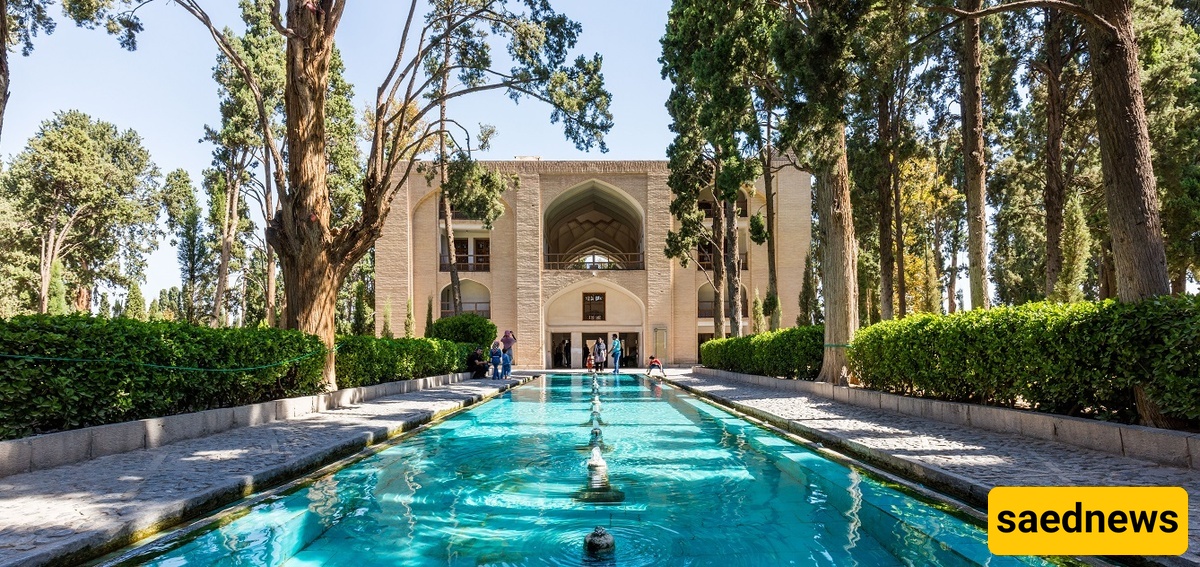
Fin Garden in Kashan is one of the city’s most famous and beautiful tourist attractions. It was registered on Iran’s National Heritage List in 1935 and later added to UNESCO’s World Heritage List in 2011.
Covering an area of approximately 33,799 square meters, the garden is distinguished by its uniquely geometric interior walls and surrounding cylindrical towers, giving it a grand and majestic appearance. It is also known as the "King’s Garden." This historic and beautiful garden holds stories that date back centuries, and the mention of the name "Amir Kabir" alone evokes the echoes of history resonating within its walls.
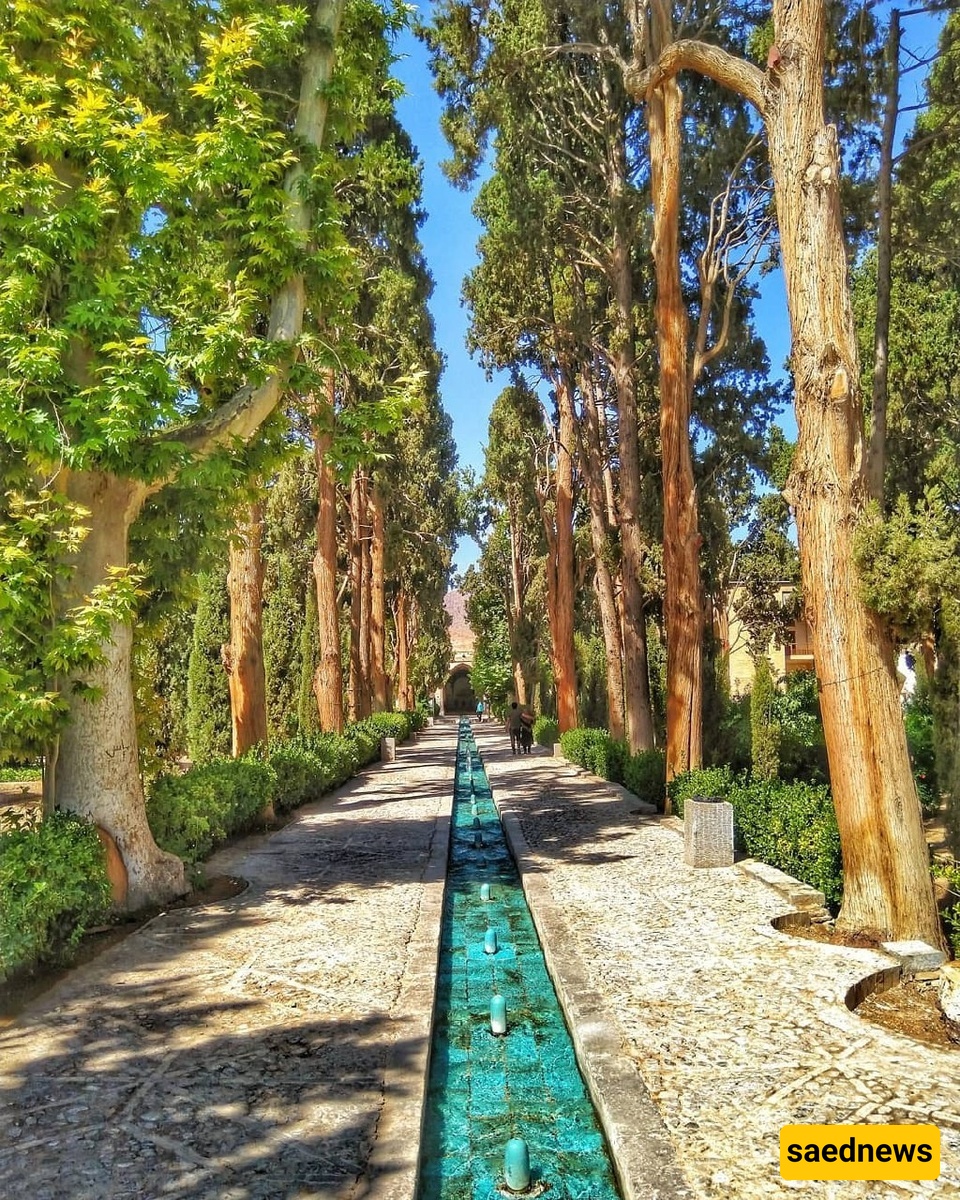
From an architectural perspective, Fin Garden in Kashan is considered one of the nine most beautiful Iranian gardens listed as UNESCO World Heritage sites, thanks to its unique and distinguished design. This enchanting Iranian garden is located in one of Kashan’s oldest neighborhoods, known as "Fin."
Fin Garden features a basin called the "Wishing Pool." It is said that anyone who throws a coin into this pool will have their wish come true. However, most visitors and tourists do so for amusement and entertainment, which has led to the pool being filled with various types of coins.
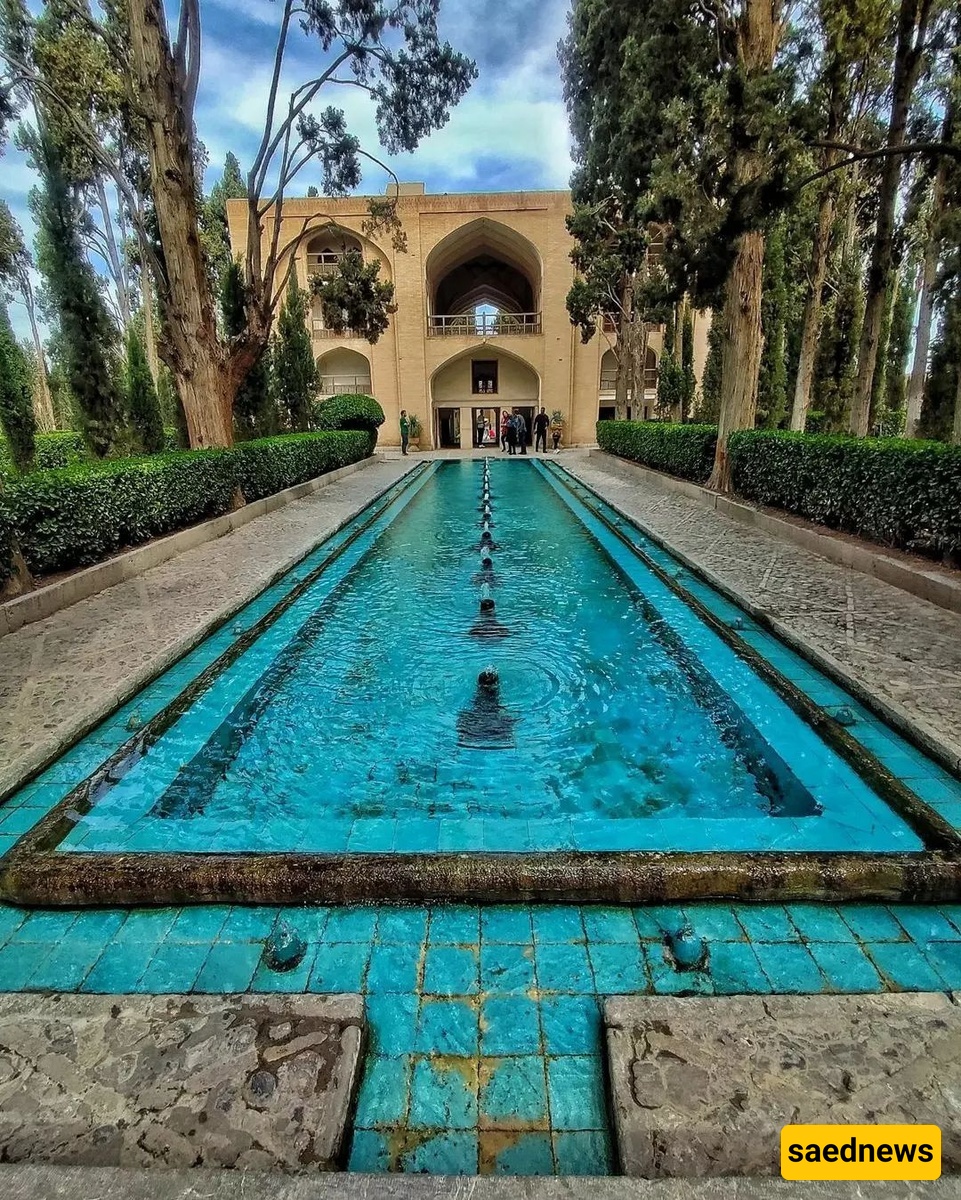
In Zoroastrianism and according to the beliefs of ancient Iranians, water was regarded as a symbol of purity and light. Therefore, followers of Zoroaster used to offer a part of their possessions as gifts to the god of waters, believing that this offering would bring blessing and purity to their homes and pockets.
The Fin area in Kashan has long been a focal point for Iranian kings and rulers throughout history due to the presence of a continuously flowing spring. In fact, the exact date of the garden’s establishment is unclear, but some accounts attribute the construction of this garden to the era of Ardashir Babakan, the founder of the Sasanian dynasty.
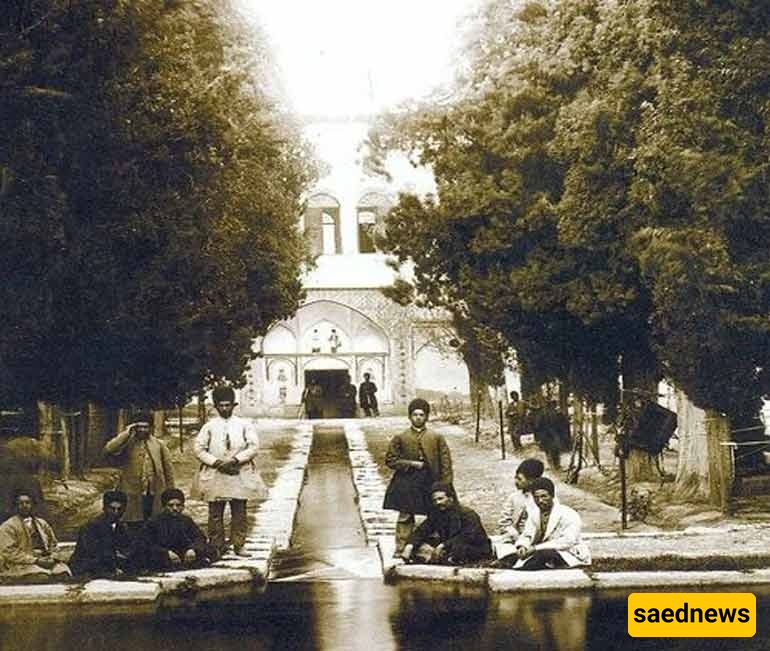
However, there is one thing we can be certain of: the earliest reference to Fin Garden in historical sources dates back to the era of Ya’qub ibn al-Layth al-Saffar, who mentioned the existence of a spring and a garden in the deserts of central Iran. Based on these sources, some experts and historians believe the establishment of this garden goes back to the rule of the Buyid dynasty.
Others argue that Fin Garden in Kashan belongs to the Ilkhanid period, citing the fact that Yaqut al-Hamawi, a 7th-century AH historian, wrote about the people of Kashan enjoying leisure time in the Fin gardens.
Fin Garden has not been spared from disasters, both natural and man-made. One of the most notable natural disasters was the earthquake during the Safavid era, specifically in 951 AH solar calendar (1572 AD) under Shah Tahmasp, which caused significant destruction to the garden. The remaining part of this destruction is known today as the “Old Garden,” located a few hundred meters away from the current garden.
During the reign of Shah Abbas I of the Safavid dynasty, major architectural restoration and expansion works were undertaken in Fin Garden, including the construction of tall, round towers. A large street and square were built between the old and new gardens, which were used for playing "Chogan" (polo) and hosting various competitions.
Furthermore, to protect against floods, Shah Abbas I ordered the construction of a stone and mortar dam (sarj) about one kilometer south of the garden, which still stands to this day.
Attention to Fin Garden and its restoration continued after Shah Abbas’s reign. During the rule of Shah Safi, the upper floor of the “Shatrgulu” building (known as the camel’s throat) was constructed using wood and iron, making it a suitable place for hosting banquets, moving between different parts of the garden, and viewing the garden from above.
This period (the Safavid era) also saw the construction of important architectural elements within Fin Garden, such as the main gate, the "Amir Kabir" bathhouse (the small bath), and the Safavid "Kushk" (palace or royal pavilion). It is worth noting that the garden’s paved floor, decorated with solar motifs, also dates back to this era.
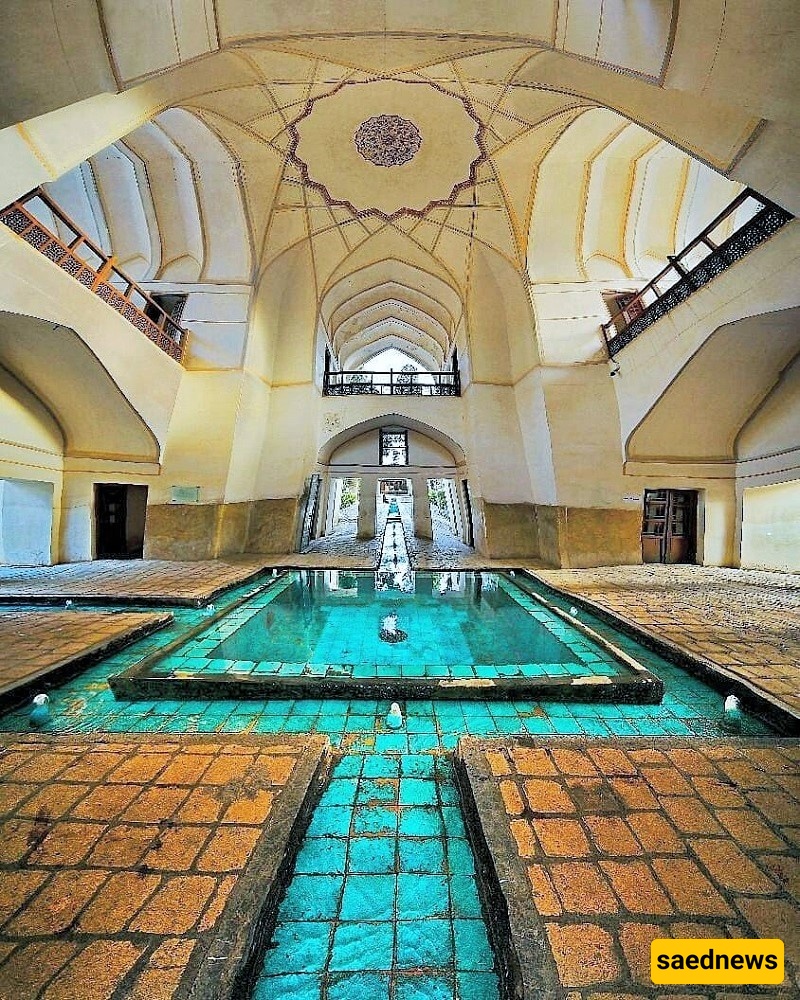
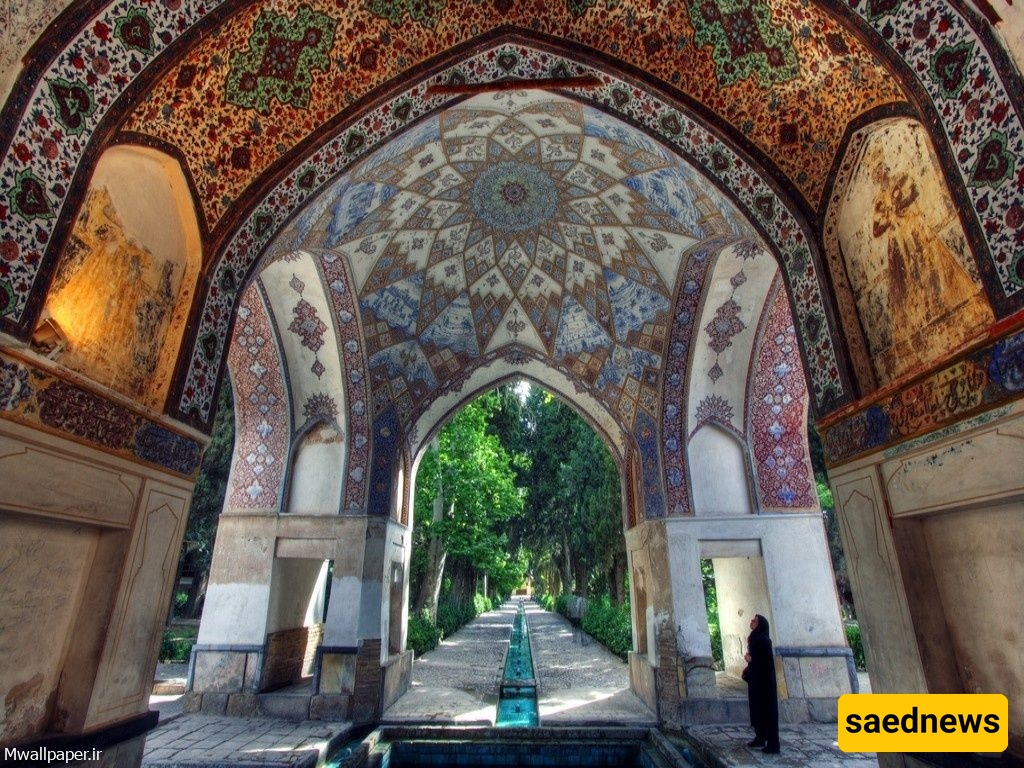
Most of the buildings we see today in Fin Garden, Kashan, date back to the era of Fath-Ali Shah Qajar, who was passionate about the garden and its flowing spring. Under his orders, the garden acquired a luxurious and royal appearance. A large bathhouse was constructed next to the old Safavid bath, alongside what is known as the "Khalvat Karimkhani." Additionally, wall panels depicting scenes of royal hunts and banquets were added to some parts of the garden’s buildings.
Among the most notable works carried out during the Qajar period in the garden were:
The construction of a windcatcher building (currently used as a library),
Restoration of both the large and small bathhouses,
The addition of Haft-Rang tiles (the colorful seven-color ceramic tiles) and turquoise mosaics, which became some of the garden’s most distinctive decorations.
During the Pahlavi era and the Islamic Republic period, the focus was primarily on restoring the buildings, pools, and stone flooring of the garden. In 1314 AH solar calendar (1935 AD), Fin Garden was officially registered on Iran’s national heritage list, drawing further attention to its historical and architectural significance. Under the Islamic Republic, the garden was honored by being inscribed on UNESCO’s World Heritage List, cementing its status as one of the most important and beautiful historic gardens in Iran and worldwide.
Important Historical Events in Fin Garden, Kashan
As mentioned in the story of this ancient garden and the interest of kings and rulers throughout history, it is no surprise that highly significant historical events took place within its walls, events that shaped the course of Iranian history. Below, we highlight the most notable of these:
– The Celebration of Shah Ismail Safavi
After Shah Ismail Safavi secured a major victory over his enemies, he decided to celebrate the beginning of his reign by visiting the city of Kashan. Specifically in Fin Garden, he held a large public festival, inviting the general populace as well as local dignitaries.
The people of Kashan welcomed the Shah like a hero, decorating the city with lights and ornaments, creating an atmosphere of joy and celebration. Historical accounts indicate that Shah Ismail held two festive occasions in Fin Garden where he met with his subjects and solidified his relationship with the people as the new ruler of Iran.
This event was not merely a passing celebration but a symbolic political statement: that the new rule was one of justice and prosperity, and that the garden was not only a space for luxury but also a place to consolidate authority and win hearts.

– The Assassination of Khodr Nahavandi, Governor of Kashan
Khodr Nahavandi served as the sole governor of Kashan for many years and wielded significant power and influence—so much so that Shah Abbas Safavid began to grow concerned about his strength. Around the year 986 AH solar calendar (circa 1577 AD), while strolling in Fin Garden, Khodr was attacked by an assailant who stabbed him repeatedly with a dagger, resulting in his death. Later accounts claimed and recorded that this assassination was a political killing ordered by the Shah.
– The Death of Shah Safi
Shah Safi visited Fin Garden in Kashan several times and was known to greatly admire it. However, during his final visit and while residing in the Dolatkhaneh Palace, narratives state that he died due to excessive consumption of alcoholic beverages. Following this incident, his 10-year-old son was crowned king within the same garden, marking the beginning of his reign.
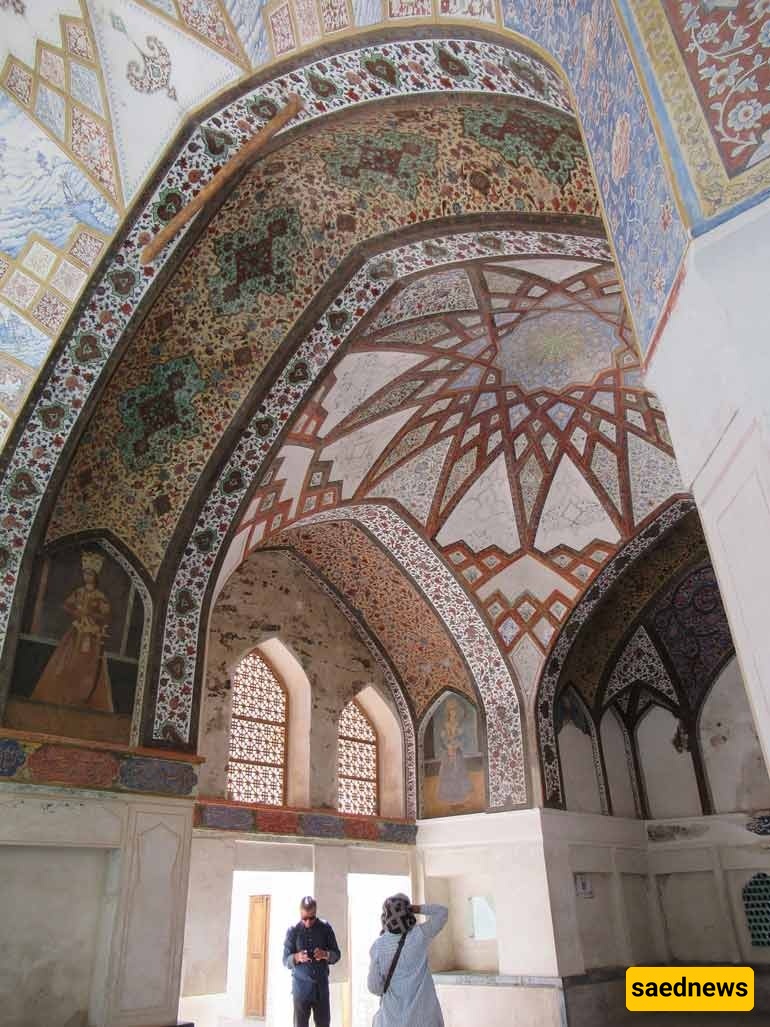
– The Assassination of Amir Kabir
Mohammad Taghi Farahani, known as "Amir Kabir," served as the Prime Minister (Sadr-e Azam) during the reign of Naser al-Din Shah Qajar and had a profound impact on Iran's reform movement. He initiated numerous significant cultural and political reforms of his time, including the establishment of Dar al-Fonun (the first modern university), the reorganization and modernization of the army, the management of Karaj water distribution, setting salaries for royal court officials, among others.
Although he was beloved by the Qajar Shah and earned his favor, Amir Kabir had powerful enemies within the royal court, notably the Shah’s father and Haj Ali Khan Maraghi, who ultimately orchestrated his dismissal from the prime ministership and exile to Kashan. Forty days after his exile, Naser al-Din Shah regretted his decision and sent a royal decree summoning Amir Kabir back to the court.
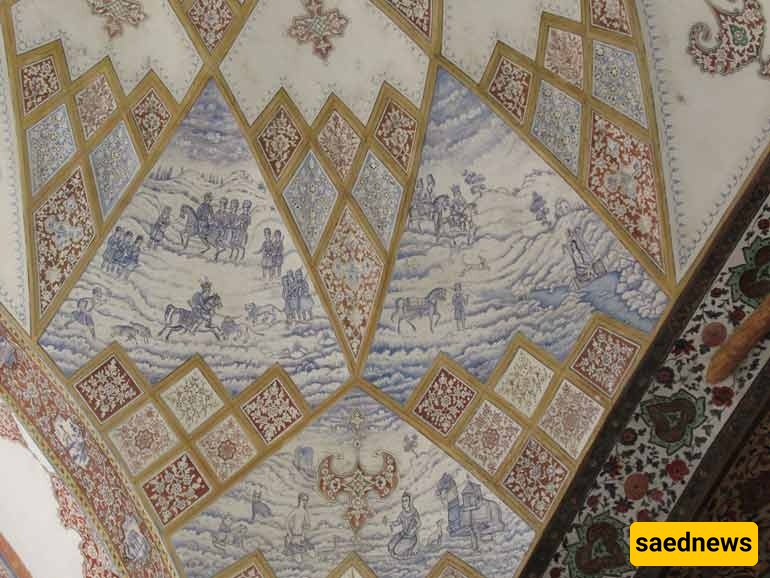
However, Amir Kabir’s enemies did not remain idle. While Naser al-Din Shah was intoxicated, they took advantage of his drunkenness and forged his signature to authorize Amir Kabir’s assassination. As a result, the assassins traveled to Kashan, and upon arriving at Fin Garden, they found Amir Kabir in the bathhouse.
The assassins entered the bathhouse through an alley and read the Shah’s death warrant to Amir Kabir. He requested to see his wife and children one last time, to write a brief will, and to perform two units of prayer (rak’ahs), but all these requests were denied by the assassins. However, they allowed him to choose the manner of his death. Amir Kabir asked the barber to cut the vein in his hand so that he would die peacefully.
Nonetheless, the assassins, wanting to be certain of his death, did not wait for the natural outcome and strangled him with a piece of cloth. After Amir Kabir’s death on the 20th of Dey 1230 AH (January 1852 AD), a seven-day mourning period was declared in Kashan. He was buried at the Imamzadeh Habib ibn Musa shrine in Kashan. Two years later, Amir Kabir’s wife transferred his body from this grave to Karbala for burial in the shrine of Imam Hussein (peace be upon him).
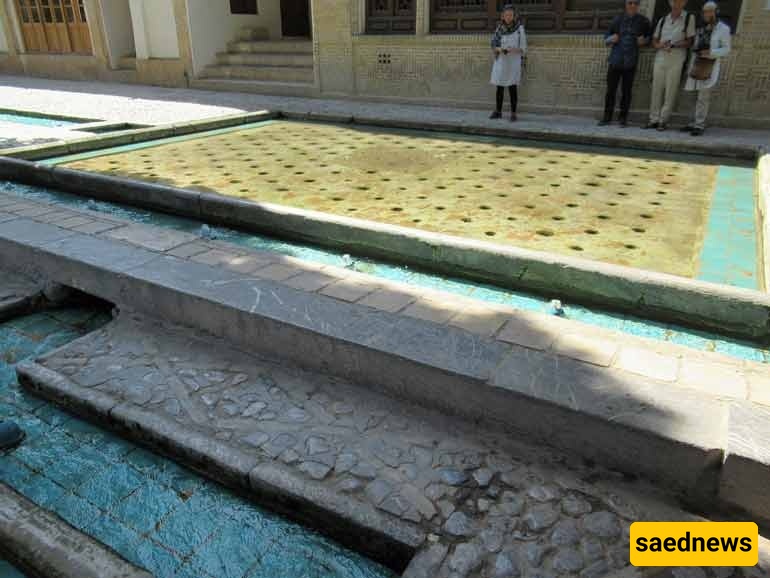
– The Refuge of Nayeb Hossein Kashani
Nayeb Hossein Kashani and his companions were among the protesters during the reign of Mohammad Ali Shah Qajar. They took refuge in Fin Garden in Kashan and fought there for nearly 14 years, causing significant damage to parts of the garden. Eventually, they were captured by the central government and executed in 1298 AH (around 1880 AD).
The garden is known by this name because it is located in the Fin district of Kashan city. But what does the word "Fin" mean generally? Some suggest that "Fin" is an Arabized form of the Persian word "Bin," meaning "end" in old Persian, which is plausible since this area was considered the final point of Kashan city.
Another possibility is that "Fin" is derived from the word "Fineh," referring to a type of hat once worn by the inhabitants of this city, known as "Fineh."
Alongside the prominent role of water features and trees that beautify every corner, the design of buildings, palaces, and structures within Fin Garden is remarkably attractive and greatly enhances its splendor.
When Fin Garden was originally built, symmetry was one of its fundamental features. However, over time and during restoration efforts after the Safavid era, this aspect became somewhat less distinct. Nonetheless, traces of this symmetry can still be found throughout the garden and its palaces.
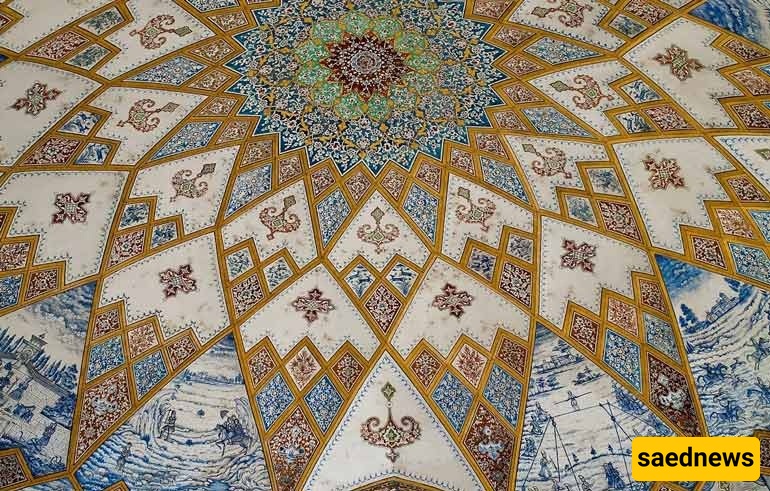
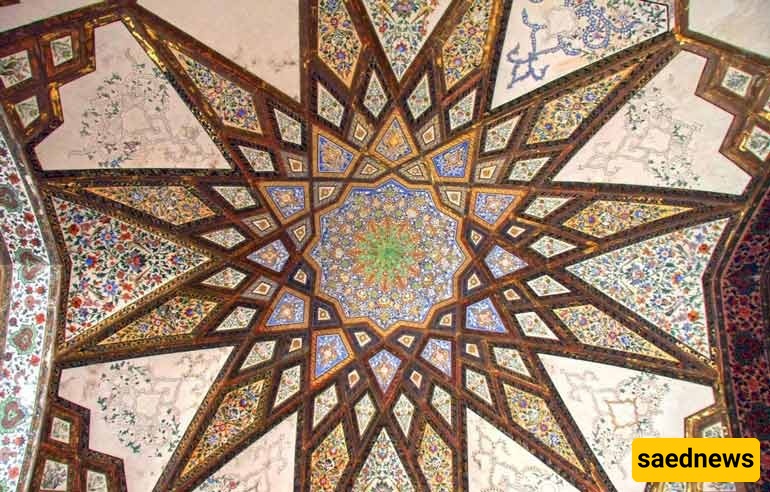
Trees are a fundamental element of Fin Garden in Kashan and have remained lush and green in this garden for many years. In addition to 579 cypress trees, the garden also contains 11 plane trees, some of which are several centuries old. The oldest trees in the garden, known as the "Leyli and Majnun Cypress," are approximately 500 years old and are located next to the Qajar palace.
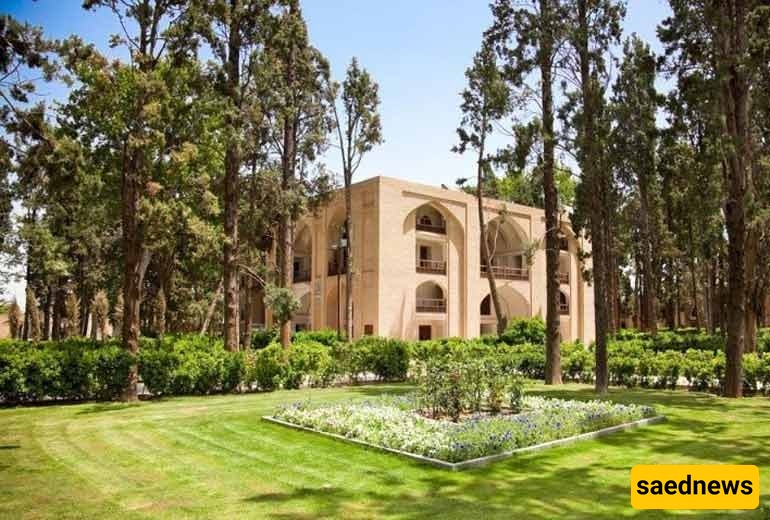
The long lifespan of these trees highlights the crucial role they have played in the design and care of Fin Garden. It is clear that planting plane trees alongside the cypresses was intended to enhance the garden’s visual beauty. Naturally, other trees such as mulberry and fig also grow within the garden.
However, the tragedy lies in the fact that despite these trees surviving and thriving for 500 years and withstanding numerous historical events, they have suffered significant damage in recent years due to multiple factors. These include unprofessional interventions, the passage of electrical wires and cables, improper irrigation, the combination of service pipes, severe frost, poor management, and more. Consequently, many of Fin Garden’s trees have dried out and fallen ill.
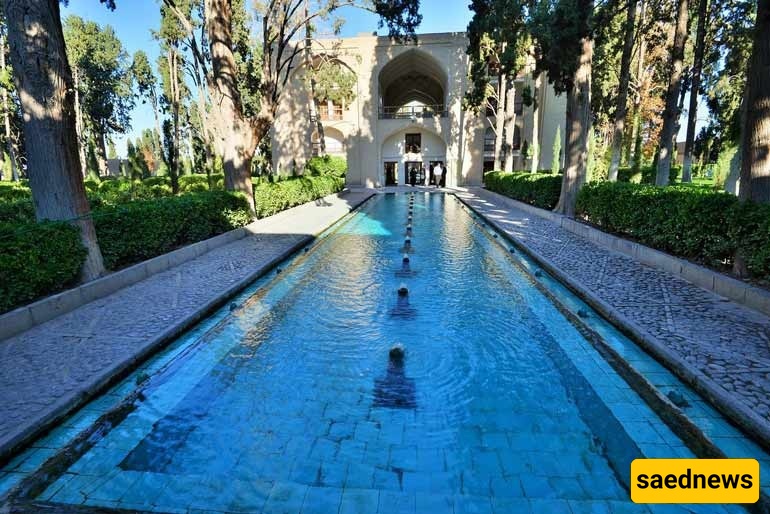
The Twelve-Fountain Pool was constructed during the reign of Mohammad Shah Qajar. This long, rectangular pool is adorned with beautiful fountains and is considered one of the most famous pools within Fin Garden in Kashan.
Located behind the Joshān Pool, water flows into the Joshān Pool and then descends through ceramic pipes into the Twelve-Fountain Pool, powering its fountains.
In Iranian garden architecture—and specifically in Fin Garden—the philosophy behind using pools and fountains centers on creating a sense of tranquility and purity, as well as cooling the surrounding garden environment.
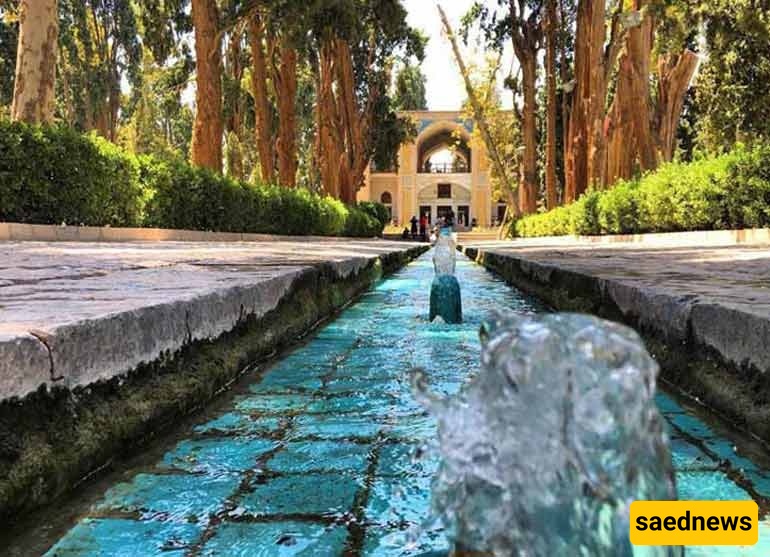
The Joshān Pool in Fin Garden is one of the remarkable features of the garden’s architecture and is a popular tourist attraction in Kashan that captivates visitors. The floor of this pool is entirely covered with intricately decorated tiles bearing patterns reminiscent of traditional Kashan carpets. These tiles were transported during the reign of Mohammad Ali Shah by rebels led by Nayeb Hossein Kāshi to a private garden.
However, due to a lack of expertise in arranging the tiles in a specific manner, the tiles were not effectively used. Except for the damaged portion, some of these tiles were sold to the Louvre Museum in Paris.
The Joshān Pool contains 160 holes, each symbolizing the flowers in the carpet designs. It operates in an interesting way: when water springs from the first hole as a fountain, the second hole acts as a suction point for the water. This mechanism was considered a unique and remarkable feature in the pool’s design.
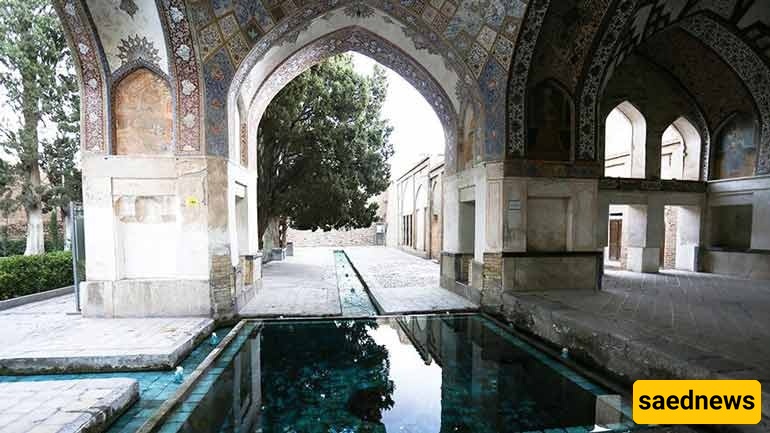
Fin Garden in Kashan shines with its beauty and splendor during the spring and summer seasons, much like many other famous Iranian gardens, when plants are at the peak of their greenery and blooming flowers. Additionally, in spring, the air is filled with the fragrant scent of rosewater and Kashan’s Damask roses, enhancing the overall experience. Therefore, if you want to see the garden in its finest form, it is best to visit during the spring or summer seasons.

